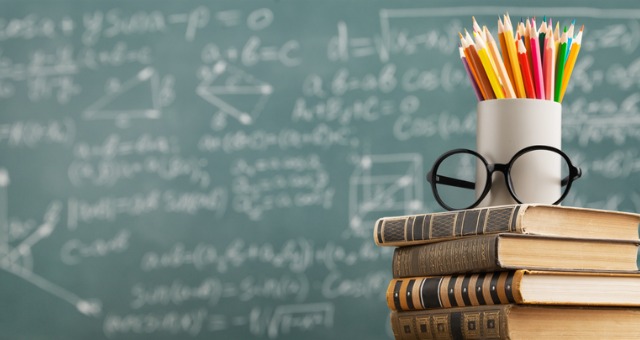Affordable Primary Science Tuition Singapore for All Learning Needs
Affordable Primary Science Tuition Singapore for All Learning Needs
Blog Article
A Comprehensive Guide to the Numerous Discovering Techniques in Key Science Guideline
The expedition of varied learning methods in primary scientific research guideline offers a chance for teachers to enhance trainee interaction and understanding considerably. By examining hands-on knowing techniques, inquiry-based strategies, and collaborative methods, we can identify effective techniques that provide to different finding out styles.

Hands-On Knowing Techniques
Hands-on discovering techniques play a pivotal duty in key science instruction, involving pupils in active expedition and trial and error. These methods permit students to connect straight with sensations and materials, promoting a deeper understanding of scientific principles. By utilizing manipulatives, designs, and real-life experiments, teachers produce an environment where students can observe, assume, and test their ideas.
Such techniques not only improve understanding however likewise grow critical reasoning and analytic skills. When students join tasks like building basic makers, planting seeds, or carrying out chain reactions, they are encouraged to ask concerns and look for responses with their own monitorings. This experiential strategy aids to demystify complicated scientific concepts, making them extra relatable and easily accessible.
Additionally, hands-on discovering promotes collaboration amongst peers, as trainees usually operate in teams to perform experiments or share searchings for. This teamwork not only enhances their understanding experience yet additionally establishes important social abilities. Ultimately, incorporating hands-on techniques in key science instruction promotes a lifelong love of learning and curiosity about the natural world, laying a solid foundation for future scholastic pursuits in science and beyond.
Inquiry-Based Understanding
Inquiry-based discovering is an educational approach that urges pupils to ask questions, examine phenomena, and construct their own understanding of scientific ideas. This technique shifts the focus from standard teacher-led guideline to an extra student-centered experience, where students take the effort in their instructional trip. By fostering curiosity, inquiry-based understanding advertises deeper involvement with the product, permitting pupils to discover subjects in a purposeful context.
In practice, this approach often involves hands-on experiments, observations, and vital thinking tasks that align carefully with the scientific method. Students are encouraged to develop theories, style investigations, and examine information, which cultivates necessary skills such as analytical and analytical reasoning. The function of the educator in this framework is to promote exploration, directing pupils via the query procedure while urging independent idea and cooperation.
Moreover, inquiry-based knowing nurtures a feeling of ownership over the discovering procedure, encouraging students to seek knowledge actively. This method not just enhances understanding of clinical ideas yet likewise fosters a long-lasting love for learning, outfitting trainees with the abilities needed to navigate a significantly intricate globe.
Collaborative Discovering Approaches
Collective discovering techniques equip trainees to participate in meaningful interactions with peers, cultivating a shared duty for their academic results. In primary science direction, these techniques motivate learners to collaborate to discover scientific concepts, resolve problems, and conduct experiments (primary science tuition Singapore). By joining team tasks, trainees can take advantage of varied viewpoints, enabling richer understanding and retention of scientific understanding
One key facet of collaborative knowing is the emphasis on communication skills. Students should verbalize their ideas, pay attention actively to others, and bargain ideas, every one of which are critical proficiencies in both real-world and scholastic contexts. This social communication not only boosts their understanding of scientific concepts however likewise advertises teamwork and problem resolution abilities.
When students see the worth of their contributions within a group, they are much more likely to take possession of their discovering journey. Overall, integrating collective understanding approaches in main scientific research instruction grows a vibrant knowing atmosphere that prepares trainees for future academic and social difficulties.
Technology Integration in Scientific Research
The combination of technology in primary scientific research direction enhances finding out experiences by supplying innovative tools and resources that sustain different training methods, consisting of collaborative understanding - primary science tuition Singapore. Using electronic systems, simulations, and interactive applications permits students to engage deeply with scientific ideas, promoting a much more hands-on strategy to learning
Online laboratories, as an example, allow students to conduct experiments securely and effectively, promoting inquiry-based understanding. These tools can imitate real-world scientific situations, enabling trainees to imagine complex procedures that would certainly be difficult to duplicate in a conventional classroom setting. Modern technology promotes communication and collaboration among trainees, as they can share searchings for and work together on jobs via on-line platforms.
Furthermore, multimedia presentations and instructional videos can improve lessons by accommodating diverse understanding designs, making abstract ideas much more available. Information analysis devices also empower trainees to gather and translate scientific data, reinforcing critical thinking abilities. In general, the calculated consolidation of modern technology in key science direction not only improves interaction but also prepares students for a technically advanced society, furnishing them with vital abilities for future clinical endeavors.
Set Apart Instruction Strategies
Separated guideline strategies are crucial for addressing the diverse demands of students in primary science education and learn the facts here now learning. These methods enable educators to tailor their mentor approaches to fit differing capacities, passions, and finding out designs within the class. By utilizing differentiated guideline, teachers can create an inclusive environment that fosters interaction and improves understanding of clinical ideas.
One effective method is to make use of learn this here now versatile organizing, which allows trainees to work together with peers at comparable skill degrees or with varying viewpoints. This method motivates peer understanding and advertises vital reasoning. Additionally, providing options in projects can encourage students, enabling them to select tasks that resonate with their passions while still fulfilling curricular objectives.
Furthermore, including tiered projects is another valuable strategy. By developing jobs with differing degrees of intricacy, instructors can guarantee that all students are appropriately tested, no matter of their proficiency. Making use of developmental evaluations to gauge recognizing further makes it possible for educators to change their training approaches dynamically, ensuring that each student receives the support they require.
Ultimately, applying differentiated guideline approaches in main science education and learning not only enhances trainee discovering end results but additionally cultivates a passion for science, preparing trainees for future scholastic quests.

Final Thought
In summary, reliable key scientific research direction necessitates a diverse technique that includes hands-on learning, inquiry-based methods, and collective methods. The assimilation of modern technology and set apart direction further caters to diverse understanding styles, cultivating an atmosphere conducive to expedition and crucial thinking. By executing these approaches, teachers can boost pupil original site engagement and understanding, inevitably supporting a lifelong passion for science and questions. Such extensive techniques are necessary for establishing notified and curious future scientists.
The expedition of varied learning methods in main science guideline offers an opportunity for educators to improve student interaction and comprehension substantially.Hands-on knowing strategies play a crucial role in key scientific research direction, engaging students in energetic exploration and trial and error.Inquiry-based knowing is an instructional strategy that urges trainees to ask inquiries, investigate phenomena, and build their very own understanding of clinical ideas.Joint learning techniques equip students to involve in meaningful communications with peers, promoting a shared duty for their educational results. Overall, including collaborative knowing methods in primary scientific research guideline grows a dynamic discovering atmosphere that prepares trainees for future academic and social challenges.
Report this page